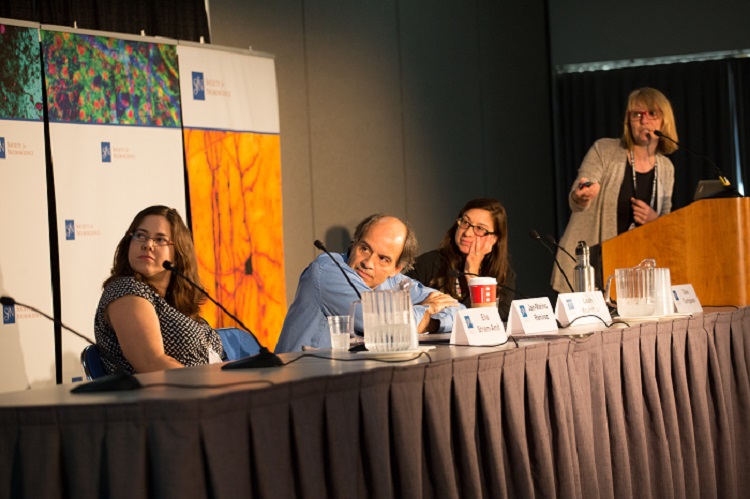
Neuronline Spotlight: Resources for an Evolving Training Landscape
Throughout their careers, neuroscientists engage in many types of collaboration. In these Neuronline Q&As, SfN members detail scenarios in which they have worked with other scientists and colleagues at their institutions, in their respective countries, and in the global community, and how these collaborations have benefited their science.
Neuroscience and Art: One Lab’s Approach to Experimental Learning
Bevil Conway, a visual neuroscientist, artist, and associate professor at Wellesley College, teaches laboratory-based courses that encourage creative thinking, such as a vision and art course. In these courses, students work together to solve problems and improve their scientific skills.
Conway often partners with non-scientific departments at Wellesley and other institutions and notes in this interview that for collaborations of this sort to work, “a common playing field where people in the different fields are genuinely listening, acknowledging the question and domain within each other’s territory, and coming up with a common vocabulary is the essential starting point.”
Neuroscience and Art: One Lab’s Approach to Experimental Learning
Teresa Morales, an associate professor at the Institute for National Autonomous University of Mexico (UNAM) and member of SfN’s Neuroscience Training Committee, shares in this interview that “in Mexico, there is a strong tradition in neuroscience. International collaboration is very important for us, especially for training and discussing research.”
In addition to describing the importance of international research and training partnerships, she describes a research collaboration that she has undertaken with a colleague in California and advises how to ensure that a collaboration is effective and mutually beneficial.
Why Is Community So Important? This Neuroscientist’s Story Illuminates
Hakeem Lawal, an assistant professor at Delaware State University and a member of SfN’s Global Membership Committee, details in this interview how he transitioned from Lagos, Nigeria, to the United States and then to institutions in three different states as he continued his training and began his career.
“The incredibly welcoming nature of the scientific community helped me,” he explains. “I also actively sought out friendly environments. Science is a truly global enterprise. We all speak the same language of science.”



















